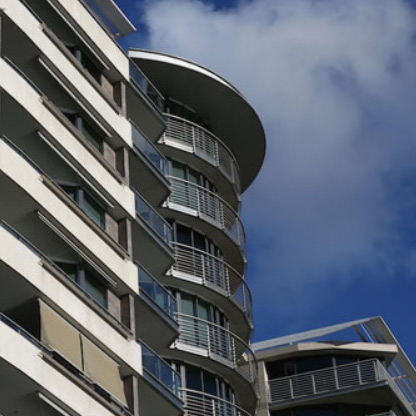In order to profit from renovating an investment property, it’s important to think about who your future tenant is likely to be and how much rental income you could generate.
It's worth working out what type of properties have the strongest demand in a given suburb before buying a unit and embarking on a renovation project.
For example, an oversupply of one-bedroom units in a certain area should make you wary of purchasing a similar property. However, if two-bedroom units are in demand among renters, then establish what type of renovations prospective tenants will be drawn to within those units.
Changes to match the property
Ideally, you should make renovations that are appropriate to the style of unit. If the apartment building is brick, has aluminium framed windows and was built in the 1970s or 80s, for example, adding period features from another era may stand out for the wrong reasons.
Any changes you make should also depend on the structure of the apartment. You'll want to make sure you're creating well-proportioned rooms and making the most of windows and balconies.
Little tricks can make an older apartment look and feel contemporary. Removing cove standard cornices, for example, and square settings can make the ceiling seem loftier.
Spatial awareness
Another aspect many tenants tend to focus on is space. In older developments, the kitchens are typically in separate rooms and often quite large. Open plan can give you more opportunity for 'dead' circulation space to have more than one function.
Even the perception of space can work some magic, making the unit feel bigger than it really is. You can create a greater sense of space by, for example, pulling out kitchen benchtops that run along a wall and adding an island bench instead.
In the bathroom, a small shower area and neat sink off the wall will take up less room than a big bath and sink on top of a boxy cabinet. But keep in mind that storage space is also high on the priority list of many tenants, so you'll need to strike a balance between the two.
Location and floorplan
A unit’s location and its floorplan should also be top of mind when you’re looking at potential properties to buy and renovate. You can do all the updating you want, but if the apartment is in a spot that isn’t popular among tenants (and buyers later down the track if you decide to sell), this could impact your profit potential.
Similarly, you can't easily change the floorplan of an apartment, so it's likely to shape your renovation strategy. For example, if the floorplan shows the rooms are in an odd arrangement, the apartment layout is crammed or there is poor access to light, the potential to change it may be limited and costly.




